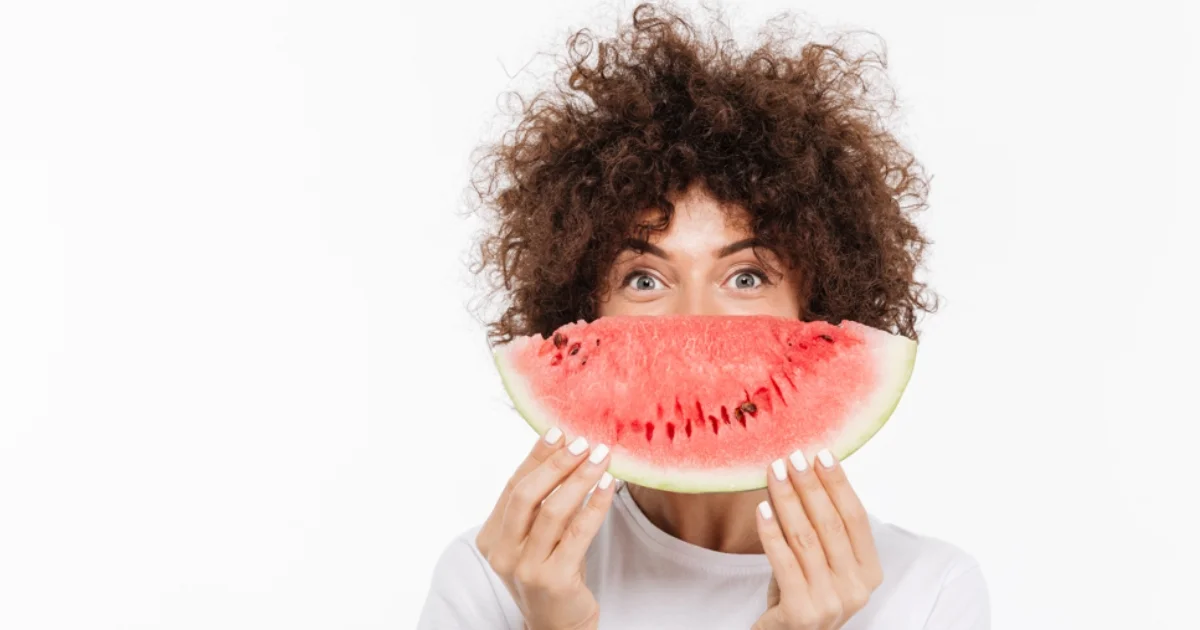Blog
The Science of Sunscreen: Why It's Essential for Your Health

You’re heading out the door on a cloudy Tuesday morning in February. Sunscreen probably isn’t top of mind—it’s not summer, and there’s no visible sun. But ultraviolet (UV) rays are still present, and your skin is still being exposed, even through cloud cover and glass.
What many people don’t realize is that UV damage happens gradually. It builds over time, often without any obvious signs. By the time fine lines, sunspots, or changes in skin texture appear, that damage has already been accumulating for years.
The good news is that daily sun protection is one of the simplest and most effective ways to reduce long-term skin damage. Whether or not you burn easily, and regardless of your skin tone, sunscreen plays a key role in protecting your overall health.
In this article, we’ll explore how sunscreen works, why it matters year-round, and what to keep in mind when building a daily routine.
How UV Rays Actually Harm Your Skin
Most people know that sunlight can burn the skin, but the effects go deeper than that. There are two types of ultraviolet (UV) rays that impact skin health:
UVA rays penetrate deep into the skin and are largely responsible for premature aging and long-term damage.
UVB rays mostly affect the surface layers, causing sunburn and increasing the risk of skin cancer.
Even short amounts of sun exposure add up over time—whether you’re walking the dog, sitting near a window, or driving with your arm by the door.
Overexposure to UV rays increases your risk of melanoma and other skin cancers, especially if you’ve had frequent sunburns or take medications that increase sun sensitivity.
What SPF Means and Why It Matters for Sun Protection
SPF stands for Sun Protection Factor, and it measures how long a sunscreen will protect you from UVB rays. For example, SPF 30 means you’re getting about 97% protection, while SPF 50 gives about 98%. But most people apply too little and too infrequently.
To get the full benefit:
Use about a teaspoon for your face and neck
Reapply every two hours when outdoors
Apply 15–30 minutes before going outside
Certain medications can make your skin more sensitive to the sun. If you're unsure how your prescriptions may affect your sun protection needs, our pharmacists can walk you through it during a routine consult.

How Sunscreen Protects Your Skin from UV Rays
Sunscreen protects your skin in two main ways, depending on the type of ingredients it contains.
Physical (mineral) sunscreens use zinc oxide or titanium dioxide. These ingredients sit on top of your skin and reflect UV rays away, like a mirror. They start working immediately and are less likely to cause irritation, making them a good choice for sensitive skin.
Chemical sunscreens contain ingredients like avobenzone, octinoxate, or oxybenzone. These absorb into your skin and convert UV rays into heat, which your body then releases. They typically feel lighter and blend in more easily but need that 15–30-minute window to become fully effective.
Many modern formulas combine both approaches to give you better protection with a more comfortable feel.
Daily Sunscreen Use Benefits for Skin Health
Making sunscreen a daily habit provides benefits that extend far beyond preventing sunburn.
Prevents premature aging. Regular broad-spectrum sunscreen use is the most effective anti-aging strategy available. Studies show that people who use sunscreen daily have significantly less skin aging than those who use it only occasionally.
Reduces skin cancer risk. Daily sunscreen use can cut your melanoma risk by up to 50% and reduce squamous cell carcinoma risk by about 40%.
Maintains even skin tone. Consistent protection helps prevent dark spots, melasma, and the blotchy appearance that comes with accumulated sun damage.
Protects your skincare investment. If you're using retinoids, acids, or other active ingredients, sun protection prevents these treatments from making your skin more vulnerable to damage.
Why Sunscreen Is Important Year Round
The biggest misconception about sun protection is that it's only necessary during summer months or sunny days.
Cloud cover blocks only about 20% of UV rays, so you're still getting significant exposure on overcast days. Snow reflects up to 80% of UV rays back at you, which is why skiers can get severe burns even in freezing temperatures.
Windows in cars and buildings block most UVB rays but let UVA rays through.
That means you're getting the aging and DNA-damaging effects of sun exposure while sitting in your office or during your daily commute.
At higher altitudes, UV exposure increases by about 4% for every 1,000 feet above sea level. If you live in or frequently visit mountainous areas, this exposure adds up quickly.
How to Choose the Best Sunscreen for Your Skin Type
Not all sunscreens work the same way for everyone. Finding the right formula makes daily use more comfortable and sustainable.
For sensitive skin: Stick with mineral-based formulas containing zinc oxide or titanium dioxide. Avoid fragrances and look for products labelled as hypoallergenic.
For oily or acne-prone skin: Gel-based or water-based formulas work better than heavy creams. Look for "non-comedogenic" on the label to avoid clogged pores.
For dry skin: Choose moisturizing formulas with added hydrating ingredients like hyaluronic acid or ceramides. Many daily moisturizers with built-in SPF work well for this skin type.
For active lifestyles: Water-resistant formulas stay put through sweat and swimming but remember that "waterproof" doesn't exist. You'll still need to reapply according to the schedule.
For daily wear: Find something you actually enjoy using. If you dislike the texture or smell, you won't use it consistently.
Common Sunscreen Mistakes (and How to Fix Them)
Even people who use sunscreen regularly often don't get the full benefit because of these common errors:
Not using enough. Most people apply about half the recommended amount. You need roughly an ounce (about two tablespoons) for your entire body.
Missing spots. Don't forget your ears, lips, the tops of your feet, eyelids, and the back of your neck. These areas often show the first signs of sun damage.
Relying on makeup SPF alone. While makeup with SPF provides some protection, most people don't apply enough makeup to get the labelled level of coverage. Use a dedicated sunscreen underneath.
Using expired products. Sunscreen ingredients degrade over time. Check expiration dates and replace bottles that have been sitting around for more than a year.
Skipping reapplication indoors. If you're sitting near windows or under skylights for extended periods, you may need to reapply even when you're inside.
Special Considerations and When to Ask for Help
Medication interactions. Beyond the sun-sensitizing medications already mentioned, some topical treatments, certain supplements, and even some over-the-counter products can increase your sun sensitivity.
Skin conditions. Conditions like rosacea, melasma, or recent procedures like chemical peels require extra sun protection. Even minor cuts or scrapes heal better when protected from UV exposure.
Ingredient sensitivities. If you've experienced reactions to sunscreens in the past, our pharmacists can help you identify which ingredients to avoid and find alternatives that work for your skin.
Making Sunscreen Part of Your Daily Routine
The best sunscreen is the one you'll use every day. Make it as automatic as brushing your teeth by keeping it visible in your morning routine.
Consider your lifestyle when choosing products. If you're outdoors frequently for work or exercise, invest in higher-quality, longer-lasting formulas. If you're mostly indoors, a lighter daily moisturizer with SPF might be sufficient.
Store sunscreen where you'll see it—next to your coffee maker, by your keys, or with your other morning essentials. If it's out of sight, you're more likely to forget.
Getting the Right Advice
Our pharmacists can help you navigate the overwhelming number of sunscreen options available and make recommendations based on your specific needs, skin type, and budget.
At Cook's Pharmacy, we regularly help patients identify medications that might increase sun sensitivity, recommend products that work well with existing skincare routines, and suggest complementary products like lip protection or after-sun care.
If you're experiencing irritation from current products, have questions about ingredients, or need advice on protecting specific skin conditions, we're here to help make sun protection simpler and more effective.
Your Skin's Daily Defence Strategy
Daily sunscreen use is one of the most effective ways to prevent premature aging and reduce your risk of skin cancer. It's also much easier and less expensive than trying to reverse sun damage years down the road.
Understanding how sunscreen protects your skin from UV rays helps you make better choices about the products you use and how you use them. The key is finding a routine that works for your lifestyle and sticking with it, regardless of the weather or season.
Have questions about choosing the right sunscreen for your skin type or concerns about how your medications might affect your sun protection needs?
Stop by one of our locations or give us a call. Our pharmacists are always happy to help you find the best protection for your individual situation.
How to Make Self-Care a Part of Your Overall Health

Do you ever catch yourself pushing self-care to the bottom of your to-do list?
Between work deadlines, family obligations, household chores, and the constant ping of notifications, finding moments for yourself can seem impossible. And when you finally collapse on the couch, that nagging guilt often creeps in.
Here's the reality: self-care isn't some optional luxury or reward after everything else gets done. It's a fundamental component of staying well.
Health experts are witnessing the consequences of ongoing self-neglect in their practices.
A study from Robert Half revealed that nearly half of Canadian workers report experiencing burnout. The effects go well beyond simple tiredness. Persistent stress damages memory function, destabilizes mood, weakens immunity, and threatens long-term health outcomes.
The encouraging part? Effective self-care doesn't require expensive retreats or day-long spa treatments. Small, consistent habits such as a brief walk outside, an unrushed lunch break, or several deep breaths can significantly impact your wellbeing.
In this article, we'll clarify what genuine self-care involves, why it's more crucial than most realize, and how to integrate it into your existing routine without adding stress.
Why Self-Care Matters for Your Overall Health
Self-care isn't just about bubble baths and scented candles (though those count too). It means checking in with your body, mind, and feelings on a regular basis. Most people don't realize how deeply self-care connects to their health. When you skip it for too long, your body and mind will usually let you know.
The stress in your body drops when you practice good self-care. This affects almost every part of how your body works. With regular self-care, you'll have lower stress hormones, less inflammation, and a stronger immune system.
Taking time for activities that fill your energy tank (instead of emptying it) helps your mental health too.
The Canadian Mental Health Association has found that people who make self-care a habit tend to get sick less often, bounce back faster when they do get sick, and feel more content with their lives. These benefits reach beyond just you — when you're taking good care of yourself, you have more to give to others and can handle your daily tasks better.
What Does Self-Care Look Like?
When we talk about self-care at Cook's Pharmacy, we're talking about the everyday habits that keep you feeling balanced and well. It's about consistency, not cost. Self-care relies more on intention than on expensive routines.
Physical self-care might look like getting enough sleep, drinking water throughout the day, or moving your body in ways that feel good to you. It also includes taking your medications correctly and keeping up with doctor appointments.
Mental self-care could be setting aside 15 minutes to read, having a phone call with a friend, or simply turning off notifications for a while. Many people find that setting clear boundaries with work helps too, like not checking emails after dinner.
For those managing health conditions, self-care takes on specific forms. If you're living with diabetes, self-care might include checking your blood sugar and planning meals that keep you feeling your best. Our OHIP-covered diabetes education sessions help many patients turn these important tasks into comfortable routines.

How to Build Sustainable Self-Care Practices
Start With the Basics: Sleep, Nutrition, and Movement
Before trying more complex self-care, make sure you have the basics covered. These three areas create the foundation for feeling well:
Quality Sleep
Restorative sleep remains one of the most overlooked elements of effective self-care. A single night of poor rest can influence your mood, cognitive function, and ability to manage stress. Aim for 7 to 9 hours of uninterrupted, quality sleep by:
Following a consistent sleep schedule, even on weekends.
Establishing a calming bedtime routine.
Reducing screen exposure before sleep.
Creating a cool, quiet, and dark environment.
Nourishing Nutrition
Nutrition does more than fuel your body. It sends important signals that affect your energy levels, emotional health, and mental clarity. Instead of focusing on restrictive eating, consider including more foods that nourish both body and brain:
Colourful fruits and vegetables.
Healthy fats like avocados, nuts, and olive oil.
Protein sources that work for your dietary preferences.
Adequate hydration throughout the day.
Many patients ask our team about the connection between nutrition and mental health. Ongoing research into the gut-brain axis suggests that food choices may influence mood, focus, and emotional balance more than we once thought.
Mindful Movement
Physical activity doesn't have to be intense to be effective. Any form of movement you enjoy and can maintain regularly contributes to self-care.
Examples include:
A morning walk before starting your day.
Gentle stretching while watching television.
Choosing stairs instead of elevators when possible.
Recreational bike rides on weekends.
Using a walking pad under your work desk.
Try to think of movement not as another task, but as a release valve for built-up stress. Even five minutes of physical activity can regulate mood, reduce cortisol levels and help reset your nervous system.
Simple Ways to Build a Wellness Routine
Want to start a wellness routine but don't know how? Here are three realistic starting points:

1. Start with 10 Minutes a Day
You don't need a complete lifestyle overhaul to begin feeling better. Ten minutes of physical activity, quiet focus, or gentle stretching each day can support a greater sense of balance and help lower stress.
Set a soft reminder on your phone, or pair it with something you already do, such as brushing your teeth or making tea. Rather than changing everything at once, start with a single five-minute habit. Once that feels natural, build from there.
Many people give up on self-care because they begin with too much at once. Like medication, it works best when taken regularly as prescribed, and the effects often take time before you feel the full effect.
2. Link New Habits to Existing Ones
Self-care doesn't need its own slot in your calendar. Instead, try piggybacking it onto things you already do without thinking. By pairing self-care with everyday routines, it becomes easier to remember and more natural to follow through.
Take a moment to stretch and breathe deeply while your morning coffee brews. Turn your dental routine into a gratitude practice during those two minutes of brushing. Even those few annoying seconds while your computer boots up? Perfect time for a quick check-in: “Where am I holding tension right now?”
Before you start the car, pause for three deep, centring breaths. These little shifts turn self-care into something effortless, because you're anchoring it to habits you already have.
3. Don't Wait for a Breakdown
Mental well-being and physical health both need regular care, not just crisis management. Identify what typically gets in the way of your self-care and plan accordingly:
If time is your obstacle, look for "hidden minutes" in your day (commute time, waiting in lines, commercial breaks).
If forgetting is your challenge, set gentle reminders on your phone.
If motivation wanes, find an accountability partner.
Remember that self-care during difficult times is even more important, though often more challenging. Like wearing a seatbelt, it's protection for life's unexpected moments.
Making Self-Care Work for Your Life Stage
Self-care isn't universal. What supports you will shift based on your current responsibilities, available energy, and stage of life. Regardless of where you are today, there are practical ways to approach self-care that feel manageable, realistic, and appropriate for your circumstances; without adding pressure or creating unrealistic expectations.

For Parents
When you're raising kids, self-care often happens in short, scattered moments. These small practices can make a big difference:
Practice parallel self-care by choosing activities you can do with your children, such as family walks or preparing healthy meals together.
Trade childcare with another parent, friend, or family member, so you can have some personal time.
Include your kids in age-appropriate wellness habits, like stretching or quiet reading time.
For Caregivers
If you're caring for someone with health challenges, your needs still matter. It's not selfish to tend to your own well-being:
Join a support group (in person or online) to connect with others who understand.
Explore respite care options for short breaks.
Keep up with your own healthcare and check-ins. You can't pour from an empty cup.
For Busy Professionals
When your calendar is packed, self-care often gets pushed aside. But even small shifts can help protect your peace:
Block off short breaks on your work calendar and treat them like real appointments.
Use transitions like the drive home or a walk between meetings for a quick mental reset.
Turn your commute into recovery time with a soothing playlist or podcast.
For Students
Balancing classes, work, and a social life leaves little room to breathe. That's why micro-moments matter:
Take screen-free breaks between classes to rest your brain.
Prep a simple home-cooked meal when you can.
Ask for help when stress starts piling up.
Stretch or take a few deep breaths to ease anxiety and reset your focus.
For Seniors
As your routines shift, self-care is just as vital but might look slower and steadier:
Stick to regular medical appointments and wellness checkups.
Stay connected through walks, phone calls, or community activities.
Set gentle reminders for medications and carve out time for joyful routines like gardening, reading, or music.
There's no "right" way to do self-care. What matters is that it works for you, right now. You're not aiming for perfection. You're simply tuning in to what you need and remembering that support is always available.
Small Steps, Significant Impact
Self-care isn't selfish. It's essential. It's also one of the best long-term investments you can make in your health. You don't need hours of free time or expensive tools. What matters most is showing up for yourself in small, steady ways that fit your real life.
There's no such thing as perfect self-care. What counts is creating habits that feel sustainable and support the life you're living right now. At Cook’s Pharmacy, we believe self-care is essential for health. Discover easy ways to start a sustainable routine today.
The Importance of Hydration: Making Water a Daily Habit

Ever notice how a houseplant visibly perks up after receiving proper hydration? While humans don’t wilt like leaves, our bodies reveal more subtle signs when fluid levels decline. The truth is most of us aren’t drinking enough water throughout the day to fully enjoy the benefits of drinking water daily.
Across Canada, a surprising number of people are walking around mildly dehydrated without realizing it. And this quiet kind of thirst can take a toll—on your concentration, your energy, your digestion, and even your joints.
Dehydration is a commonly overlooked health issue that can gradually impact overall well-being.
In this article, we’ll explore why hydration is so essential, how your body signals that it’s running low, and how to establish a hydration habit—even if your water bottle tends to stay full until bedtime.
Why Your Body Can't Function Without Proper Hydration
Water isn’t just for quenching thirst—it’s something your body relies on constantly. It regulates temperature, cushions joints, moves nutrients, and helps remove waste. Even slight dehydration—a small drop in fluid levels—can leave you feeling off, with symptoms like fatigue, brain fog, or a lingering low-grade headache.
Your brain is especially sensitive to hydration. That classic afternoon slump that sends you reaching for another cup of coffee? It might be your brain quietly asking for water. While your overall body is roughly 60% water, your brain is closer to 75%. You're not just staying alive with water—you’re thinking with it, too.
Your joints are also significantly impacted. The soft cartilage between your bones is composed of approximately 80% water. So, when you're low on fluids, that cushioning gets thinner, and your joints may feel stiffer or more uncomfortable than usual. Individuals with mild joint discomfort may experience noticeable relief by increasing their fluid intake.
Then there’s digestion. Water plays a key role in helping your body break down food and absorb nutrients effectively. In fact, being even slightly dehydrated is one of the most common contributors to constipation. Before turning to medication or supplements, increasing your water intake is often a simple yet effective first step.
How to Tell If You're Not Drinking Enough Water
Feeling thirsty is the most obvious sign that your body needs water—but it often arrives too late. By the time thirst kicks in, you’re already mildly dehydrated. The most effective strategy is to maintain consistent water intake throughout the day.
The color of your urine provides one of the most reliable indicators. When you're adequately hydrated, your urine should be pale yellow—similar to light lemonade. If it’s dark yellow or amber, you need to drink more. If it’s completely clear, you may be overhydrating.
Frequent headaches—particularly in the afternoon—are another common indicator of dehydration. Before reaching for pain relievers, consider drinking a full glass of water and waiting a few minutes. You may be surprised by how frequently proper hydration alleviates discomfort.
Common Signs of Dehydration:
Dark yellow urine
Afternoon headaches
Dry lips or skin
Feeling tired or dizzy
Muscle cramps
Bad breath or dry mouth
Learning to recognize these signals early makes it easier to stay ahead of dehydration before it begins to interfere with your daily life.
How Much Water Should You Actually Drink Each Day?
We’ve all heard the old “eight glasses a day” rule—but the truth is, hydration isn’t one-size-fits-all. How much water you need depends on your body size, how active you are, what the weather’s like, and even what medications you’re taking.
Health experts suggest about 11 cups daily for women and 15 cups for men. This includes all fluids plus water-rich foods, which give us about 20% of our daily water intake. Individuals who exercise regularly have increased hydration requirements.
A good rule of thumb is to add an extra cup of water for every 15 to 20 minutes of physical activity. Those exercising in summer heat will require increased fluid intake due to elevated perspiration levels. The key is to drink before you feel thirsty— as thirst often indicates you're already mildly dehydrated.
Weather affects your water needs too. Hot, humid days increase water loss through sweat, while cold, dry air causes water loss through breathing. Most people need about 15-20% more water during extreme weather conditions.
Some medications increase fluid loss, including diuretics, certain antidepressants, allergy meds, and blood pressure prescriptions. If you're on any of these, you may need extra water. We’re happy to help you review your medications and how they might affect your hydration needs.

Daily Hydration Habits That Work
These daily hydration tips for busy people are simple, flexible, and designed to fit real-life routines:
Start your day with water—before coffee, before breakfast, even before checking your phone. After 7 to 8 hours of sleep, your body wakes up dehydrated. Reaching for water first thing helps reset your system and sets a healthy tone for the rest of the day.
Keep your water where you can see it. People drink about a cup and a half more per day just by keeping water nearby and in sight. Consider using a reusable water bottle with time markers or measurement lines—seeing your progress makes it easier to stay on track.
Link water to habits you already have. Drink a few sips after each bathroom break, before every meal, or whenever you pick up your phone. These small triggers help turn drinking water into a background habit.
Enhance the flavor if necessary. If plain water isn’t appealing, consider adding fresh fruit, cucumber slices, mint, or a splash of juice. Many people find cold water more refreshing than room temperature—and if bubbles help you stay interested, go ahead and choose sparkling. These practical strategies are especially helpful during busy periods and can make daily hydration more attainable and sustainable.
If you’ve tried all these tips before but still struggle. Consider setting smaller, incremental goals to begin with. Instead of jumping to eight glasses, start with adding just one extra glass of water per day. Once that feels normal, add another. Small wins build confidence and make bigger changes possible.
Other Ways Your Body Gets Hydrated Beyond Water

Good news: staying hydrated isn’t just about drinking water. Your body also gets fluids from the foods and drinks you have throughout the day—even things you might not think “count.”
Fruits and vegetables with high water content—like watermelon, cucumber, strawberries, and lettuce—do more than feed you. They also provide water while giving you fiber, vitamins, and minerals.
Soups, broths, and herbal teas count toward your daily fluids too. In colder weather, these warm options feel better when drinking cold water doesn't appeal.
Milk and plant-based alternatives offer hydration along with nutrients like calcium, vitamin D, and protein. In fact, milk may even hydrate better than water in some situations thanks to its protein and electrolytes.
Coffee and tea also help with your daily fluid intake, even though they're mild diuretics (making you urinate more). In normal amounts, the water they provide is more than the water you lose. So yes—your morning coffee does count.
Sports drinks have their place but aren't needed for most regular activities. Unless you're exercising for more than an hour, plain water works well without the added sugars and calories. Many sports drinks contain sugar levels comparable to soft drinks, making them less ideal for daily use.
A common misconception is that staying hydrated requires costly electrolyte beverages. For most people doing regular activities, plain water is perfect. If you're concerned about electrolytes, foods like bananas, yogurt, and nuts provide them naturally without the added cost or sugar.
Special Situations That Change Your Daily Water Needs
Older adults have a higher risk of dehydration. As we age, we feel less thirsty, and our kidneys don't conserve water as well. In fact, dehydration is one of the main reasons older Canadians go to the hospital. Caregivers should regularly encourage fluid intake to help prevent dehydration-related complications.
Children need more water for their size because of faster metabolism and greater surface area. For school-aged kids, easy access to water helps with learning—children who drink enough water tend to focus better and do better on memory tasks.
Managing chronic conditions? Hydration is even more important. Dehydration can influence blood sugar in diabetes and may intensify medication side effects in heart or kidney conditions. We offer OHIP-covered diabetes counselling to help support proper hydration and medication management.
If you're following a weight management plan like Ideal Protein at Cook's Pharmacy, proper hydration can support your success. Water helps your body process proteins and fats more efficiently and can help reduce food cravings that might be thirst signals.
When to Talk to a Healthcare Professional About Hydration
Hydration habits matter—but sometimes, persistent symptoms like dry mouth, dark urine, or unrelenting thirst can signal something deeper. If you’re drinking plenty of fluids and still noticing these signs, consult a healthcare professional.
Even modest adjustments, such as increasing water intake, can result in noticeable improvements in energy, focus, and digestive function. If you’re unsure where to begin, book an appointment at your nearest Cook’s Pharmacy. We’re here to help you find the right approach for your body and your life.
Springtime Sniffles: Tips for Supporting Kids' Immune Systems

Springtime in the KW region brings those first gloriously warm days. Kids ditch their winter gear and head outside to play - but along with melting snow and budding trees comes the inevitable seasonal health challenges. Runny noses, sudden sneezes, and those mysterious spring fevers can quickly turn playground adventures into sick days on the couch.
How can parents help keep kids healthy when pollen counts rise, and seasonal bugs circulate? Building a strong immune system makes all the difference between a spring spent exploring outdoors and one spent nursing colds.
Understanding Childhood Immunity During Seasonal Changes
It often seems like children catch every bug that circulates around daycares and schools. There's actually a good reason for this phenomenon. Young immune systems are still learning to recognize and fight off threats - a process that takes years of exposure and development. Canadian pediatricians typically see children battling through 8-10 colds every year as part of this natural immune education.
Spring creates a perfect storm for increased illnesses. The fluctuating temperatures, sudden environmental changes, and increased outdoor activity all influence how well children fight off seasonal challenges. Researchers note that while we can't speed up immune development, we can certainly support the process through targeted health habits.
Spring Throws Extra Challenges at Kids
What makes spring particularly tough on children's health?
Tree pollen kicks off allergy season before most flowers even bloom (Red Maple trees and White Birch trees are notorious for this!)
Cold viruses thrive in temperature fluctuations between warm days and cool nights
Puddle-jumping and mud play introduce new environmental exposures
Longer daylight hours disrupt established sleep patterns
Winter's limited sun exposure may have depleted vitamin reserves
Effective Strategies to Support Your Child's Immune System
Food Matters: What They Eat Affects Immunity
The connection between diet and immunity isn't just a health trend - it's well-established science. Dietitians across Canada point to several nutrients that directly impact how well children fight offspring illnesses:
Vitamin C powers white blood cell function. While oranges get all the credit, these surprising sources pack an even bigger punch:
Red bell peppers contain nearly 3x more vitamin C than oranges!
Strawberries (the first berries of the season at St. Jacobs Market)
Kiwi fruit
Broccoli (yes, the vegetable many kids refuse - try it roasted with a little maple syrup)

Vitamin D regulates immune responses and helps reduce inflammation. After our long Ontario winters, many kids run low on this crucial nutrient. Health Canada suggests 400 IU daily from:
15-20 minutes of spring sunshine when possible
Fatty fish in meals twice weekly
Egg yolks
Fortified dairy (or non-dairy alternatives)
Zinc helps immune cells communicate and develop properly. Reliable sources include:
Lean meats in pasta dishes or sandwiches
Beans in soups or wraps
Pumpkin seeds as snacks
Whole grain cereals and breads
Probiotics support the gut-immune connection, where about 70% of immune tissue resides. Medical research shows these "good bacteria" help train immune responses. Find them in:
Yogurt with active bacterial cultures
Kefir drinks (some kids prefer the fruit-flavored varieties)
Mild fermented foods
Specially fortified products
The key isn't perfection but consistency. Even adding one immunity-supporting food to each meal makes a difference over time.
Sleep: More Important Than We Realize
That spring sunshine streaming through bedroom windows at 7pm makes bedtime battles even tougher. But sleep remains crucial for immune function. According to Kids' Health, outlines these sleep requirements:
Preschoolers: 10-13 hours nightly
School-age children: 9-12 hours
Teenagers: 8-10 hours (though good luck with that!)
During sleep cycles, the body produces protective proteins called cytokines that help fight infection and control inflammation. Cut sleep short, and production drops while stress hormones rise - a recipe for lowered immunity.
Spring sleep strategies that actually work:
Start adjusting bedtimes gradually when daylight saving hits
Invest in blackout curtains for children's rooms
Maintain the same calming bedtime routine year-round
Keep electronics out of bedrooms
Try to limit weekend/weekday sleep schedule differences to one hour
Hydration: Simpler Than It Seems
Water might not seem exciting as an immune booster, but proper hydration affects everything from how well mucous membranes trap viruses to how efficiently white blood cells circulate. Hydration:
Keeps protective barriers functioning
Helps flush toxins
Enables immune cells to travel throughout the body
Maintains healthy lymphatic flow
CHOC recommends water as the primary beverage, with different daily targets by age:
Toddlers: About 4 cups daily
Elementary-age children: 5-7 cups daily
Teens: 7-10 cups daily
Spring activities increase sweat and fluid loss. For kids who resist plain water:
Try water bottles with built-in fruit infusers
Freeze diluted juice into popsicles for after-school treats
Serve fresh fruits with high water content
Make "special occasion" herbal teas for older children
Movement: The Overlooked Immune Supporter
After months of indoor living, kids naturally crave outdoor activity - and this instinct supports good health. Canadian physical activity guidelines recommend 60+ minutes of energetic movement daily. Beyond general fitness benefits, exercise:
Circulates immune cells more efficiently
Raises body temperature slightly, which may help kill pathogens
Reduces stress hormones that suppress immunity
Improves sleep quality
Great spring immunity-boosting activities around KW:
Family bike rides on the Iron Horse Trail
Exploration at rare Charitable Research Reserve
playground adventures at Waterloo Park
Gardening at community plots
Ball games at local school fields

Timing matters for allergy-prone kids. Pollen typically peaks midday and on windy afternoons, making morning or evening often better for outdoor play. Having children shower and change clothes after coming inside helps remove allergens that might trigger symptoms.
Taming Allergy Season Without Weakening Immunity
Nearly 1 in 5 Canadian children battle seasonal allergies, which can make spring miserable and tax immune resources. The Asthma Society of Canada suggests several practical approaches:
Watch local pollen forecasts (the Weather Network provides daily KW-specific counts)
Have kids rinse off after playing outside
Keep bedroom windows closed, especially at night
Wash bedding weekly in hot water
Talk to healthcare providers about appropriate medications
How can you tell allergies from colds? Allergic reactions usually cause:
Clear, watery nasal drainage (versus thick or colored discharge)
Itchy eyes, nose, and throat
Sneezing fits
No fever or body aches
Symptoms that worsen with outdoor exposure
Hand Hygiene: Still Worth the Effort
Remember the pandemic handwashing songs? Those habits remain valuable for preventing many common childhood illnesses. Public health experts highlight these continued practices:
Thorough handwashing for at least 20 seconds:
- Before meals and snacks
- After playground time
- Following bathroom visits
- After nose-blowing or coughing
Proper covering of coughs and sneezes
Regular cleaning of high-touch items like doorknobs and tablets
Keeping hands away from faces (easier said than done!)
Not sharing personal items
Making hygiene engaging rather than tedious helps establish lasting habits. The hand sanitizer stations in high traffic places offer a good reminder for kids about germ awareness when out and about.
Natural Supports Worth Considering
Beyond everyday habits, some natural remedies show promise for immune support. Health Canada always recommends talking with healthcare providers before using supplements, but research suggests potential benefits from:
Elderberry preparations – Research indicates possible benefits for reducing cold and flu duration
Pure honey (for children over 12 months) – Soothes coughs and contains antimicrobial compounds
Vitamin C supplements during illness – May reduce symptom severity, though evidence is mixed
Echinacea – Some research suggests modest preventative effects
These supplements work best alongside fundamental health practices rather than as replacements. The pharmacists at Cook's often help parents navigate these options with personalized advice based on a child's specific health needs.
When to Call in the Professionals
Home care works for many spring ailments, but certain symptoms warrant professional attention. Contact healthcare providers when children experience:
Any fever in infants under 3 months
Fevers above 39°C (102.2°F) in older children
Symptoms persisting beyond 10 days
Breathing difficulties or wheezing
Unusual lethargy or irritability
Signs of dehydration
Symptoms improving then suddenly worsening
The pharmacists at Cook's locations throughout KW and the new Guelph shop can help determine when over-the-counter remedies might help and when medical care becomes necessary. Unlike the big chain pharmacies where staff barely have time to fill prescriptions, Cook's pharmacists take time to discuss children's symptoms and recommend appropriate care.
Building Stronger Immunity All Year
While spring brings unique challenges, immune support works best as a year-round approach. Long-term strategies build resilience that helps children better navigate seasonal threats:
Keeping up with regular checkups and immunizations
Finding healthy ways to address stress (yoga for kids has become popular)
Limiting ultra-processed foods and excessive sugar
Exposing children to diverse environments that build microbiome diversity
Maintaining consistent vitamin D intake throughout winter months
Spring Wellness: Putting It All Together
Spring should be a time of exploration and outdoor enjoyment, not tissues and doctor visits. When families implement practical immune-supporting strategies, children can embrace seasonal pleasures with fewer illness interruptions. From colorful produce-filled meals to outdoor play at local parks, each element contributes to stronger defenses against springtime health challenges.
The team at Cook's Pharmacy offers guidance tailored to your family's specific spring health concerns. Whether questions arise about allergy management, appropriate supplements, or symptom evaluation, our professional staff provides individualized attention that large pharmacy chains simply cannot match.
Book an appointment at your nearest pharmacy or stop by to discuss specific strategies for your child's spring wellness journey.
Sleep Smart: How Quality Rest Boosts Brain Health

After a poor night's sleep, even writing a simple email becomes a challenge. Your mind wanders, mistakes multiply, and routine tasks feel overwhelming. This cognitive decline isn't just fatigue – it's your brain demonstrating the measurable effects of sleep deprivation.
Research shows that staying awake for 18 hours affects your brain similarly to having a blood alcohol level of 0.05%. This makes drowsy driving as risky as driving after drinking. The effects go beyond just feeling tired – they impact how your brain functions at a fundamental level.
Studies from the National Institutes of Health reveal that sleep serves as your brain's maintenance system, clearing out toxins that build up during the day. Yet Statistics Canada reports a troubling trend: one in three adults regularly get less than seven hours of sleep, falling short of what the brain needs for optimal function.
Sleep deprivation's effects show up everywhere: from coffee orders mixed up by tired baristas to students performing poorly after all-night study sessions. Even professional athletes see their performance decline significantly without proper rest. Sleep-deprived nurses make 30% more medication errors, while tired bus drivers face twice the risk of accidents.
How Sleep Cycles Support Brain Health
During sleep, your brain moves through specific stages, each serving distinct recovery needs. The first stage starts light – you might still hear traffic outside or your partner's breathing. As you sink into deeper sleep, brain waves slow dramatically. Later comes dream sleep, bringing heightened brain activity. These 90-minute cycles repeat throughout the night, each phase essential for different aspects of brain health.
Sleep's Role in Learning and Memory
Sleep transforms today's experiences into lasting memories. A study of medical residents showed that those who slept eight hours performed 40% better in surgical simulations than those who worked extended shifts. Students who pulled all-nighters scored 20-30% lower on exams than those who slept properly. During deep sleep, the brain strengthens important neural connections while pruning away less useful information from the day.
How Sleep Cleans Your Brain
Night activates the brain's cleanup system. Research shows this maintenance process removes up to 60% more toxic proteins during deep sleep than during waking hours. Regular sleep disruption lets these proteins accumulate between brain cells. Night shift workers often show higher levels of these compounds, potentially explaining their increased risk of cognitive problems later in life. Just one night of poor sleep reduces this cleaning efficiency by half.
Sleep's Impact on Mood and Emotions
Sleep loss significantly impacts emotional control. Brain scans reveal sleep-deprived people show twice the amygdala response to stressful situations compared to well-rested individuals. This explains why missing sleep leads to snapping at coworkers over minor issues or feeling overwhelmed by routine tasks. Regular poor sleep can alter stress hormone levels for days, making people more susceptible to anxiety and mood swings.
Effects of Poor Sleep
How Sleep Affects Brain Aging
Ever wonder why your brain feels "older" after a string of bad nights? There's science behind that feeling. Research shows that consistently sleeping less than six hours ages your brain faster than normal. While a few rough nights won't cause permanent damage, years of poor sleep can actually change how your brain works. Think of it like always running your car on empty - eventually, it takes a toll.
Sleep's Role in Brain Protection
Your brain needs sleep to stay strong and protected. Without enough rest, inflammation builds up, weakening the brain's protective barriers. Harvard Medical School researchers found that poor sleep triggers the same inflammatory responses that contribute to cognitive decline. It's like leaving your brain's shield down, making it more vulnerable to damage over time.
Building Better Brain Connections
Good sleep helps your brain stay sharp and adaptable. When you're well-rested, your brain builds new pathways and solves problems more effectively. According to NIH, missing sleep dramatically reduces your brain's ability to learn new skills and think creatively. That's because sleep gives your brain the downtime it needs to strengthen important connections – kind of like updating and organizing its neural network.
Sleep Needs Across Life Stages
Sleep requirements evolve throughout our lifetime. Teenagers need 8-10 hours, with their natural sleep cycle shifting later in the evening. Their developing brains benefit from consistent sleep patterns despite social and academic pressures. High school students getting proper sleep show better academic performance and emotional stability.
Adults require 7-9 hours of consistent sleep for optimal brain function. During these years, work stress, family responsibilities, and digital distractions often compete with sleep needs. Yet maintaining regular sleep proves crucial for memory, focus, and decision-making abilities.
Seniors experience natural changes in sleep patterns, including lighter sleep and more frequent awakenings. Creating robust sleep routines becomes essential. Many find success with earlier bedtimes and peaceful pre-sleep activities that signal rest time to their brain.
Shift workers across age groups face unique challenges. Their irregular schedules can disrupt natural sleep cycles. However, maintaining consistent sleep times, even on off days, helps minimize impacts on mental clarity and overall health.
Common Sleep Disruptors and How to Fix Them
Screens and Sleep Don't Mix
Blue light from phones and laptops cuts your sleep hormone production in half. Scrolling in bed tells your brain, "Stay awake!" rather than "time for sleep." Switch devices to night mode an hour before bed. This simple change increases sleep hormones by nearly 60%. Better yet, charge your phone in another room. Your brain will thank you.

Racing Thoughts at Bedtime?
Racing thoughts keeping you up? You're not alone – stress derails sleep for millions of adults. Your stressed brain fights natural sleep signals, leaving you staring at the ceiling. Instead of tossing and turning, try this: write down tomorrow's worries. Sleep research shows this simple act helps people fall asleep 15 minutes faster, letting your mind relax instead of replaying the day.
Watch What Goes in Your Body
Consider your afternoon caffeine intake – it remains active for 6-8 hours, interfering with your natural sleep rhythm. Late caffeine disrupts sleep preparation. Alcohol also reduces sleep quality and causes nighttime awakening. Late carbohydrates prove similarly disruptive, triggering energy increases when your body requires a slowdown.
Stick to a Sleep Schedule
Weekend sleep-ins are tempting, but disrupt your brain's natural timing system, similar to experiencing jet lag every weekend. To optimize your sleep quality, maintain consistent sleep and wake times within a one-hour range. This regularity helps your brain release sleep hormones at appropriate times, improving your natural sleep patterns.
How to Improve Sleep for a Healthier Brain
Creating Your Sleep Environment
Your bedroom environment significantly influences sleep patterns, with temperature playing a key role. Research indicates that 65-68°F (18-20°C) promotes optimal rest. Studies show even minimal light reduces melatonin by 40%, suggesting the importance of blackout curtains and eliminating LED displays. White noise effectively masks disruptive sounds, enhancing sleep quality.
Developing Your Evening Routine
The hour before bed profoundly influences sleep quality. High-intensity activities, including exercise or challenging work tasks, elevate cortisol levels and core body temperature. Instead, research supports calm activities like reading physical books or practising mindfulness. According to Positive Psychology, 10 minutes of gratitude journaling reduced sleep onset time by 15 minutes and improved overall sleep quality.
Strategic Nutrition for Better Rest
Certain foods naturally support sleep biochemistry. Tart cherries contain significant melatonin levels – studies show consuming them 2-3 hours before bed increases sleep duration by 42 minutes. Magnesium-rich foods like almonds and leafy greens help regulate neurotransmitters that govern sleep. Magnesium supplementation improves both sleep quality and quantity, particularly during periods of high stress.
Movement, Timing, and Sleep Quality
Regular exercise improves sleep architecture, but timing matters critically. Morning exercise can advance your sleep cycle by up to 30 minutes, while evening workouts may delay it. According to Health Magazine, morning exercises improves sleep quality and helps you lose weight compared to evening sessions.
Light Exposure and Your Body Clock
Natural morning light exposure for 30-60 minutes helps regulate your circadian rhythm. This simple habit can advance sleep timing and improve sleep efficiency. Evening light matters too - gradually dimming lights signals your brain to initiate sleep preparation, increasing melatonin production.

Better Sleep = Better Brain
A night of poor sleep impacts your brain: thinking becomes unclear, reactions slow, and normal tasks feel more challenging. This shows just the initial effects of sleep loss on mental performance.
During deep sleep, your brain performs vital maintenance: clearing waste products, building memory connections, and preparing for upcoming tasks. Missing sleep disrupts these essential processes, similar to skipping routine car maintenance.
Research shows quality sleep improves mental focus, memory formation, and emotional stability. Studies indicate regular sleep patterns protect brain function as we age. Each night of proper rest contributes to lasting cognitive health.
To improve sleep tonight: maintain a cool, dark bedroom environment, follow consistent sleep schedules, and remove electronic devices. These research-supported changes enhance sleep quality significantly.
Prioritizing good sleep habits now helps preserve mental function for the future. While various factors influence brain health, quality sleep remains one of our most effective tools for maintaining cognitive performance.
Have questions about sleep? Our pharmacists are here to help find solutions that work for you.
Contributors
Latest Posts
Show All Recent Posts
Archive
-
2025
-
July
-
June
-
May
-
April
-
March
-
February
-
January
-
-
2024
-
December
-
November
-
October
-
September
-
August
-
July
-
June
-
May
-
April
-
March
-
February
-
January
-
-
2023
-
December
-
November
-
October
-
September
-
August
-
May
-
April
-
March
-
February
-
January
-
-
2022
-
December
-
November
-
October
-
September
-
August
-
July
-
June
-
May
-
April
-
February
-
